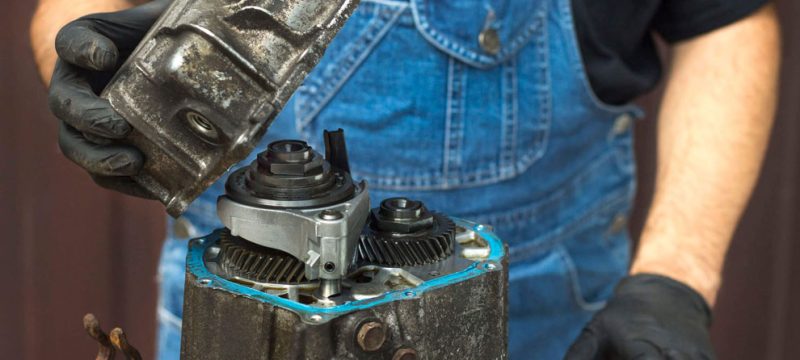How to fix a Honda Transmission Durham
Fixing a Honda transmission, especially in a city like Durham, can range from simple maintenance tasks to more complex repairs or replacements. Here’s a step-by-step guide on what you might need to do, whether you’re trying to troubleshoot issues or take it to a professional:
Steps for Fixing a Honda Transmission
- Diagnose the Problem
- Check for Symptoms: Common transmission issues in Hondas include slipping gears, delayed shifts, rough shifts, or transmission fluid leaks. Identifying the symptoms can help narrow down the issue.
- Check Dashboard Warning Lights: If the “Check Engine” light is on, it could be due to a transmission issue. Use an OBD-II scanner to read any diagnostic trouble codes (DTCs) related to the transmission.
- Check Transmission Fluid: Low or dirty fluid is a common cause of transmission issues. Inspect the fluid level and condition using the transmission dipstick (consult your manual for its location). The fluid should be red and have a sweet smell. Dark, burnt-smelling fluid indicates problems.
- Transmission Fluid Change or Flush
- Transmission Fluid Change: This is the easiest fix and may solve many issues. If the fluid is low or dirty, drain the old fluid, replace the filter (if applicable), and refill with Honda-specific transmission fluid (usually Honda ATF-DW1 or the recommended type for your model).
- Transmission Flush: A flush can be done if the fluid is contaminated or has metal shavings. However, this is more aggressive and should only be done if recommended by a professional, as it can sometimes cause further issues in older transmissions.
Steps to Change Transmission Fluid:
- Park the vehicle on a level surface and turn off the engine.
- Locate the transmission fluid drain plug underneath the car and place a drain pan beneath it.
- Remove the drain plug and allow the old fluid to drain out.
- Replace the drain plug and refill the transmission with fresh fluid through the dipstick tube using a funnel.
- Start the engine and let it idle for a few minutes. Shift through all the gears to circulate the new fluid.
- Re-check the fluid level and top off as necessary.
- Reset Transmission Control Module (TCM)
Sometimes, transmission problems can be caused by an issue with the car’s computer. You can reset the TCM by disconnecting the battery for 10-30 minutes or by using a diagnostic tool to reset the transmission codes.
- Inspect for Mechanical Damage
- If you hear grinding noises, or the car won’t go into gear, there may be mechanical issues with the transmission.
- Transmission Solenoids: These control the flow of fluid in the transmission. Faulty solenoids can cause shifting problems. Replacing the solenoids can fix shifting issues without requiring a full transmission rebuild.
- Clutch Wear (Manual Transmissions): If you have a manual Honda, a worn clutch could be causing problems. Replacing the clutch or pressure plate might fix it.
- Gears and Bearings: If the transmission grinds or clunks, internal components like gears or bearings may be damaged. This requires a professional rebuild or replacement.
- Transmission Repair or Rebuild
- If the transmission has suffered severe internal damage (worn-out gears, bearings, clutches, etc.), you may need a professional transmission rebuild or replacement.
- A rebuild involves disassembling the transmission, inspecting all components, replacing worn parts, and reassembling it.
- A replacement involves swapping the entire transmission with either a new, rebuilt, or used one.
- Get a Professional Diagnosis
If the above steps don’t solve the problem or if you suspect a more serious issue, it’s best to take your Honda to a professional mechanic in Durham who specializes in transmission repair
Key Factors to Consider
- Honda-Specific Fluid: Always use Honda-recommended transmission fluid to avoid compatibility issues. Honda’s transmissions can be sensitive to the wrong type of fluid.
- Preventative Maintenance: Regular fluid changes can extend the life of your transmission and prevent bigger issues.
- Transmission Type: Honda transmissions vary between automatic, CVT (continuously variable transmission), and manual. Ensure you’re following the correct procedures for your specific model.
When to Seek Professional Help
- Complex Issues: If you’re dealing with internal transmission failure, slipping gears, or metal shavings in the fluid, you’ll need a mechanic. These are not issues that can easily be fixed at home.
- Transmission Rebuild or Replacement: This is a job for professionals with the tools and expertise to rebuild or replace the transmission.
By following these steps, you can potentially resolve minor issues yourself or know when to seek professional help in Durham for more complex problems with your Honda transmission.
For all your transmission repair and service needs contact the experts at Cottman Transmission in Durham, NC today. To schedule your appointment visit us https://www.durhamtransmission.com/appointment/
Cottman Transmission Total Auto Care gets you back on the road faster, visit us at https://durhamtransmission.com/ or check us out on Facebook at https://www.facebook.com/CottmanofDurham
For fastest response Call your Durham transmission repair center at (919) 471-2506 today
How to fix a Honda Transmission Durham
For More Information Contact us Today or check out our Google Reviews!


